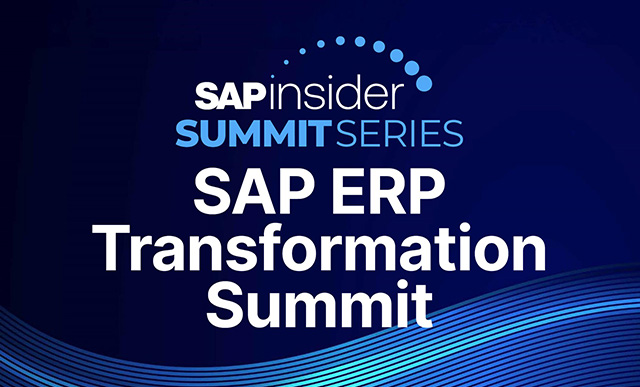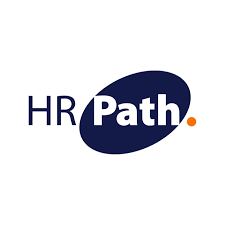SAP SuccessFactors
Filter By
Browse By
- SAP Analytics and AI
- SAP Application Development and Integration
- All SAP Application Development and Integration
- SAP ABAP
- SAP ABAP Development Tools
- SAP ABAP Test Cockpit
- SAP API Management
- SAP BAPI
- SAP Basis
- SAP BRF
- SAP Business Application Studio
- SAP CMS
- SAP Design Studio
- SAP Development Tools
- SAP DevOps
- SAP EAI
- SAP EDI
- SAP Extension Suite
- SAP Fiori
- SAP Fiori Elements
- SAP Integration Suite
- SAP Low Code Application Development
- SAP Low Code Automation
- SAP Netweaver
- SAP Release Management
- SAP UI5
- SAP Web Application Server
- SAP Web IDE
- SAP Business Process Management
- SAP Center of Excellence
- SAP CIO
- SAP Customer Experience
- SAP Data and Data Management
- All SAP Data and Data Management
- SAP BW
- SAP BW/4HANA
- SAP Crystal Reports
- SAP Data Archiving
- SAP Data Center
- SAP Data Governance
- SAP Data Integration
- SAP Data Migration
- SAP Data Quality
- SAP Data Services
- SAP Data Strategy
- SAP Data Visualization
- SAP Data Warehouse Cloud
- SAP DMS
- SAP Document Control
- SAP EIM
- SAP ETL
- SAP ETL Tools
- SAP HANA
- SAP HANA Administration
- SAP HANA Deployment Infrastructure
- SAP HANA Studio
- SAP Master Data
- SAP Master Data Governance
- SAP MDM
- SAP Enterprise Architect
- SAP Enterprise Asset Management
- SAP ERP
- SAP Finance
- All SAP Finance
- SAP Accounting
- SAP AR AP
- SAP Asset Accounting
- SAP Billing Systems
- SAP BPC
- SAP BRIM
- SAP Cash Management
- SAP Central Finance
- SAP Controlling
- SAP COPA
- SAP Cost Center Accounting
- SAP Currency Risk
- SAP e-invoicing
- SAP FICO
- SAP Finance Automation
- SAP Advanced Financial Closing
- SAP Financial Consolidation
- SAP Financial Planning
- SAP FX Risk
- SAP General Ledger
- SAP Global Tax Management
- SAP Hyperion
- SAP Order to Cash
- SAP Payment Processing
- SAP Profitability Analysis
- SAP Rebate Management
- SAP S/4HANA Finance
- SAP SWIFT Compliance
- SAP Treasury Management
- SAP Universal Journal
- SAP Governance Risk and Compliance
- SAP Human Capital Management
- SAP Intelligent Technologies
- SAP Platform and Technology
- All SAP Platform and Technology
- SAP Business Technology Platform
- SAP Cloud
- SAP Cloud Connector
- SAP Cloud Integration Platform
- SAP Cloud Migration
- SAP Cloud Platform
- SAP Cloud Providers
- SAP Cloud Strategy
- SAP Digital Signature
- SAP Container Platform
- SAP HANA Enterprise Cloud
- SAP Digital Asset Management
- SAP Smart Forms
- SAP HEC
- SAP Digital Integration Hub
- SAP Hyperscalers
- SAP Infrastructure
- SAP Messaging
- SAP Quality and Testing
- SAP Security
- SAP Spend Management
- SAP Supply Chain Management
- All SAP Supply Chain Management
- SAP APO
- SAP Asset Management
- SAP Business Network
- SAP Digital Manufacturing Cloud
- SAP Digital Twin
- SAP EWM
- SAP IBP
- SAP Inventory Management
- SAP Label Printing
- SAP Logistics
- SAP Manufacturing
- SAP Manufacturing Automation
- SAP MES
- SAP MII
- SAP MM
- SAP MRO
- SAP MRP
- SAP Order Management
- SAP Plant Maintenance
- SAP PLM
- SAP Production Planning
- SAP S&OP
- SAP SD
- SAP SPM
- SAP Supply Chain Planning
- SAP Track and Trace
- SAP Transportation Management
- SAP System Administration
What is SAP SuccessFactors?
SAP SuccessFactors is SAP’s cloud-based suite of human resources software. The SAP SuccessFactors suite is traditionally most known for its talent management tools and offers core HR capabilities through Employee Central and payroll capabilities through Employee Central Payroll.
While SAP still has many customers running its legacy on-premise SAP ERP HCM solution, SAP SuccessFactors is SAP’s primary focus for Human Capital Management (HCM) and Human Experience Management (HXM). As a result, SAP now focuses most of its HR technology innovation and development resources in the HR space on SAP SuccessFactors. Additionally, the vendor plans to end mainstream maintenance for SAP ERP HCM in 2027.
Modules and offerings within the SAP SuccessFactors suite include:
What is SAP SuccessFactors?
SAP SuccessFactors is SAP’s cloud-based suite of human resources software. The SAP SuccessFactors suite is traditionally most known for its talent management tools and offers core HR capabilities through Employee Central and payroll capabilities through Employee Central Payroll.
While SAP still has many customers running its legacy on-premise SAP ERP HCM solution, SAP SuccessFactors is SAP’s primary focus for Human Capital Management (HCM) and Human Experience Management (HXM). As a result, SAP now focuses most of its HR technology innovation and development resources in the HR space on SAP SuccessFactors. Additionally, the vendor plans to end mainstream maintenance for SAP ERP HCM in 2027.
Modules and offerings within the SAP SuccessFactors suite include:
- SAP SuccessFactors Employee Central (Core HR)
- SAP SuccessFactors Employee Central Payroll
- SAP SuccessFactors Employee Central Service Center
- SAP SuccessFactors Recruiting
- SAP SuccessFactors Onboarding
- SAP SuccessFactors Performance & Goals
- SAP SuccessFactors Compensation
- SAP SuccessFactors Learning
- SAP SuccessFactors Succession & Development
- SAP SuccessFactors Workforce Analytics
- Employee Experience Management with SAP Qualtrics
Key SAP SuccessFactors Considerations for SAPinsiders
- SAP is focused on integrating SAP SuccessFactors and its other cloud applications into its broader set of offerings. This focus is especially of interest to organizations using a variety of SAP tools. As companies adopt cloud solutions, integration between those products and the rest of an organization’s technology stack can be a challenge. SAP CEO Christian Klein noted that SAP has been working to bring the same integration experience between SAP SuccessFactors and other apps that traditional SAP ERP HCM had with the on-premise SAP ERP suite of applications.
- Managing cloud releases is different than on-premise releases. SAP SuccessFactors releases updates twice per year, and these updates often provide significant changes to functionality. Most changes are not mandatory, but customers seeking to get the most out of their cloud systems should implement updates where possible. Doing so requires a release management strategy to track the latest updates and encourage adoption. Most updates can be added to SAP SuccessFactors by opting in, a stark change from on-premise releases, which require more technical work.
- Self-service is an important component of cloud HR tools like SAP SuccessFactors. The most successful companies in their HR strategies are utilizing self-service. For example, employee and manager self-service related to time and attendance and performance management are likely to create better employee experiences and generate more efficient HR processes by removing the reliance on an HR employee to complete related tasks and paperwork. In addition, there is a possibility for self-service in more HR areas such as onboarding and learning.
499 results
-

Implementing SAP S/4HANA
Reading time: 5 mins
Organizations across all industries are looking at implementing SAP S/4HANA. SAP S/4HANA offers a host of compelling functionality for improving business operations, but companies often have questions about how to best approach this implementation. To that end, SAP has released SAP Activate, an adoption framework designed for a smooth and efficient implementation of SAP S/4HANA,…
-

Finance at the Core of Tackling Digital Disruption
Reading time: 9 mins
The digital economy is here, and with it perhaps no part of the business is more essential than finance. Whether it’s reporting, compliance, bookkeeping, or predictive analysis, finance plays a central role in anything a business wants to do. It’s no surprise, then, that finance is one of the major components of companies’ digital efforts.…
-

Building a Digital Business with APIs
Reading time: 9 mins
Digital enterprises enjoy a variety of advantages, including sophisticated customer experiences and seamless supplier collaboration. Fortunately, any organization can realize these benefits — all you need are effective applications that enable digital interactions. These digital interactions are made possible by open application programming interfaces (APIs), which are the building blocks of innovative applications in the…
-
-

The Face of Digital Innovation
Reading time: 7 mins
As digital trends spur companies toward technologies that enable greater efficiencies and ease of use, user interfaces (UIs) have become integral to this pursuit. An intuitive UI is a critical part of innovation, as simplicity in the user experience frees up time and allows end users to be more flexible in how they work. Discover…
-

SAP S/4HANA and the Public Cloud: A Powerful Combination That Brings Simplicity to Business
Reading time: 3 mins
Simplification is essential to remaining competitive in the digital economy — simple landscapes are nimbler and easier to manage. Public cloud and SAP S/4HANA are two technologies that can help businesses simplify significantly, enabling access to deep functionality with minimal setup. Learn five factors you need to consider prior to deploying SAP S/4HANA Cloud, and…
-

Discover the Digital Assistant for the Enterprise
Reading time: 8 mins
The concept of a conversational user interface (UI) is well established in the consumer world, with Alexa and Siri being the most well-known examples of intelligent digital assistants that can recognize voice commands to complete useful tasks such as scheduling a meeting, turning up the thermostat, or playing music. But what is the potential impact…
-

Leverage the Momentum of the Cloud
Reading time: 6 mins
If you’re an IT service provider or reseller, it’s likely that the cloud has been — or soon will be — a disruptive force in your business. The cloud is changing how companies consume IT services and software and, as a result, what they expect from their service providers. Fortunately, SAP offers its partners support…
-
-

Is Your HR Strategy Sustainable?
Reading time: 3 mins
While strategic HR remains essential, a new approach known as sustainable HR is taking on an increasingly central role as digital business needs and new expectations force organizations to evolve rapidly. A sustainable HR mindset helps organizations establish a culture that fosters technological innovation, enables the ability to quickly adapt to unforeseen disruption, and attracts…
-

Connecting Everyone, Everything, Everywhere
Reading time: 3 mins
In the digital economy, communication is everything — whether it’s people to people, people to machine, or machine to machine. Intelligent interconnectivity among all people and things across an organization can drive better efficiencies and deeper insights for smarter business. Learn how the SAP Digital Interconnect team, an integrated business unit within SAP Digital Business…
-

ABAP and the Cloud
Reading time: 11 mins
As the longtime foundation for SAP’s solution portfolio, ABAP is central to SAP customer landscapes. To help these customers meet modern business needs, SAP continues to add enhancements and new capabilities for ABAP that bring the latest technologies — such as the cloud and the Internet of Things (IoT) — to ABAP-based environments. This article…
Become a Member
Unlimited access to thousands of resources for SAP-specific expertise that can only be found here.
Become a Partner
Access exclusive SAP insights, expert marketing strategies, and high-value services including research reports, webinars, and buyers' guides, all designed to boost your campaign ROI by up to 50% within the SAP ecosystem.
Upcoming Events
-

SAPinsider ERP Transformation Summit
October 22 - 23, 2025
New Orleans, Louisiana
United States
View Event
Related Vendors
Your request has been successfully sent

